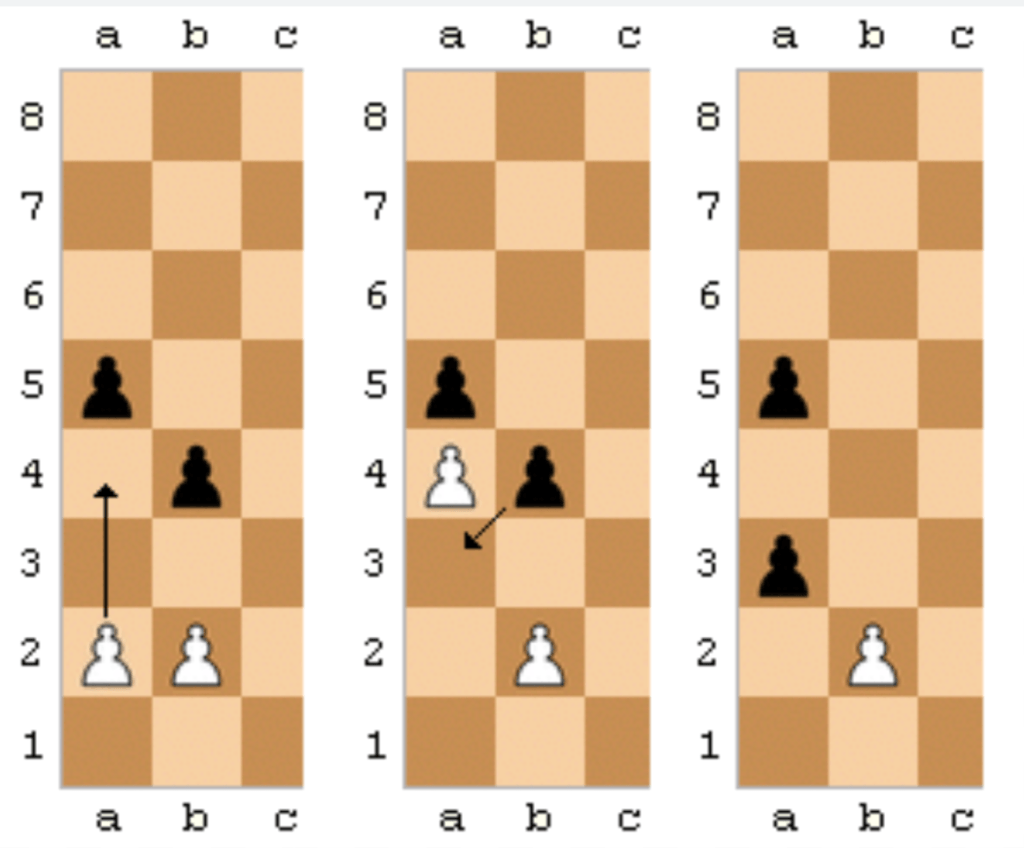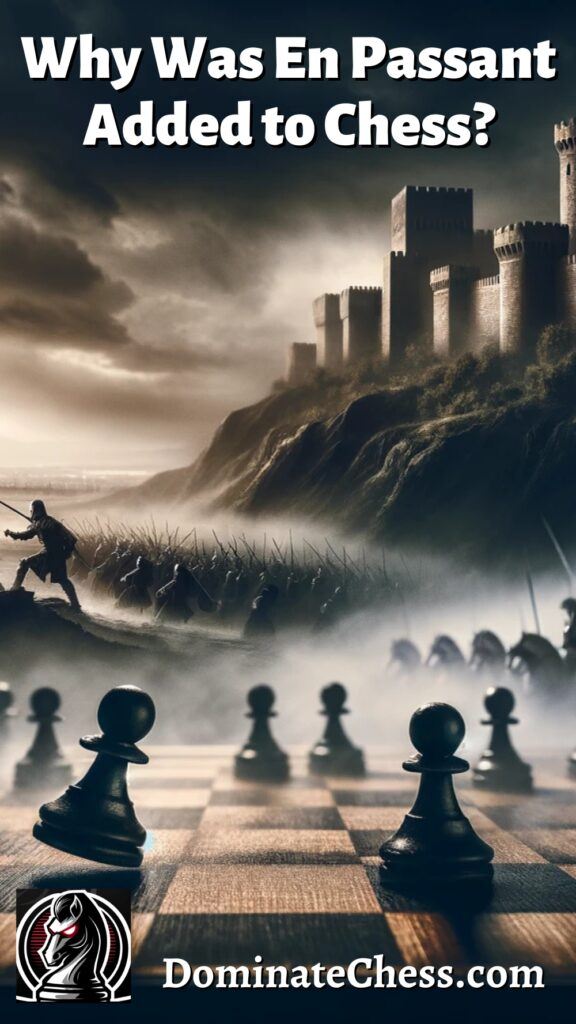There’s basically two “special” moves in chess: castling and en passant. Why was en passant added to chess?
If you’re a chess beginner, using en passant is critical to your game and I’m going to show you why.
Why Was En Passant Added to Chess?
En passant (pronounced “on-pas-on”, meaning “in passing”) was added in the 15th century to prevent pawns from advancing too quickly, adding strategy and dynamics to pawn structure and advancement.
Let’s take a look at how en passant works, how it’s affected chess strategy, why you should definitely add it to your game, and common mistakes and misconceptions about en passant.
What is en passant and how does it work in chess?
En passant is a very unique move with very specific rules for what is arguably the most underrated piece on the chess board.
It allows a pawn to capture an opposing pawn that has just made its first move, moving two squares forward from its starting position and landing next to the enemy pawn.

In the image above, the point of the white pawn on a2 skipping a3 and advancing two squares to a4 was to avoid capture by the black pawn on b4.
En passant allows the “passed” black pawn to move diagonally to the square the white pawn passed over as if that pawn had only advanced one square and was captured.
Here’s the kicker: you can only use en passant on the move immediately following the pawn advancing two squares. After that, the move is no longer legal.
How has en passant affected the strategy and tactics of chess?
The effect en passant has had on the game of chess is significant. I would say it comes into play in just about every game you play.
Think about it. Pawns, even though they are the weakest piece, are a huge part of the game.
With the addition of en passant, a whole extra layer of strategy and dynamics has been added to pawn advancement and pawn structure which are both key elements to both offense and defense in chess.
En passant can be used to sacrifice a pawn to gain a positional advantage.
Additionally, advancing a pawn two squares on its first move can tempt your opponent to use en passant which could create an opening for an attack.
It can be used to stop your opponent’s pawns from advancing too quickly.
In all cases it forces your opponent to think and rethink how they want to advance their pawns and avoid losing positional advantage.
If you haven’t added en passant to your game, you need to. There are so many opportunities in a game where it can give you a quick advantage to counter your opponent’s strategy.
Have there been any proposed changes or alternatives to en passant in chess?
En passant is now an accepted and core part of chess strategy. But think about when it was first proposed.
It must have seemed like a bizarre addition to the rules.
There have been some equally bizarre sounding proposed changes and alternatives to this rule.
- Removal of en passant. One proposed change was to remove it altogether to avoid confusion. However, with that removal you’d also remove a layer strategy and dynamics from the game.
- Modification of en passant. Some have proposed to allow pawns to capture en passant even if they’re not adjacent. Another proposed change is to require the capturing pawn to move two squares forward to do it. Yet another is to pawns to capture an opposing pawn that has moved one square forward as long as the capturing pawn is on its starting square.
- Addition of new pawn movement rules. A rule has been proposed to allow pawns to also move forward diagonally instead of just straight forward. This would eliminate the need for the “special” use of en passant.
What are some common mistakes or misconceptions about en passant?
New players can easily get confused the first time they see en passant in gameplay.
Here are some of the common misconceptions about en passant:
- That It’s a rare move. En passant isn’t obscure at all. It can come into play in just about every game, and the thought of using it or not using it is ultra common.
- That it can be used at any time. As I’ve discussed, en passant has very specific rules for being used and it can only be used immediately following the opposing pawns first two square move.
- That it can be used to capture any piece. En passant can only be used to capture a pawn that has just moved two squares forward. It can only be used on pawns.
- That it is an advance move. Once you know how en passant works, any beginner can utilize this move frequently.
The Impact of En Passant on the Development of Chess
There’s no denying that since the 15th century when en passant was first introduced, it has become widely accepted as a key fundamental strategy in the game of chess.
Prior to en passant the pawn’s movements were very limited. The addition of en passant has directly led to many specific opening strategies and defenses as well.
Also, because en passant is a “special” move, it has added interest for new players to adopt it and learn more about it. It gives chess added dynamics. New players tend to feel excitement the first time they utilize en passant.
Final Thoughts
En passant is a move that adds strategy, dynamics, and threats of positional advantage and disadvantage to the game of chess. It has very specific rules for its use, but it is a core part of just about every chess game.
What do you think? Do you remember the first time you heard about en passant? How often would you say it comes into play in games you’ve played? Let me know what you think in the comments below! I love hearing what you have to say and I always respond!



This little tutorial, particularly the video demonstration was very helpful. I’m still learning chess and your site has been super helpful. Sometimes I feel that I am too old to start to play chess more seriously, This article has been an encouragement because I can see the rationale behind the move and how it can alter a game. Thanks.
Jim
You’re never too old to play chess! Thanks for the comment!
Love this article, as a chess fan I dont play much but I always remember my dad and uncle teaching me how to play as a kid. It has grown into a family tradition to play during family gatherings and holidays. I never researched the technicalities of the game, but as I can see on your website you have totally broken it down. Chess is a powerful game and I like to think of it as real time strategies between world governments and militaries. Interesting stuff!
Yes, it’s one of the simplest “complex” games ever created. Get back to playing! Thanks for the comment!
I found the section on proposed changes intriguing. It’s interesting to see how chess may evolve in the future and to think of how en passant must have been perceived at one point. Are there still players that refuse to use or acknowledge this movement rule? Thanks for the article!
En passant is pretty much here to stay, but yes, any changes are always met with a little push-back. It’ll be interesting to see if there’s any new changes to the game in our lifetime. Thanks for the comment!